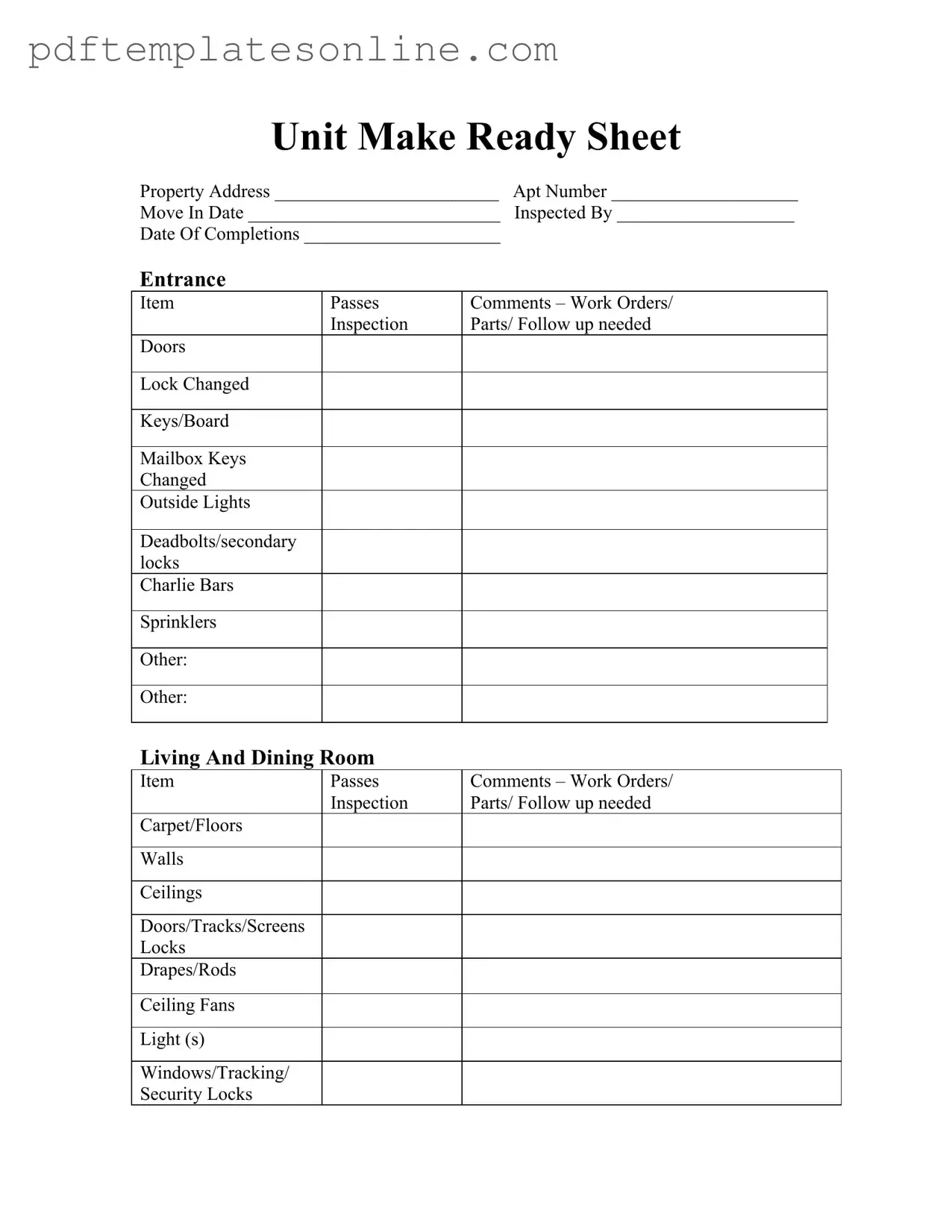Blank Make Ready Checklist Form
The Make Ready Checklist form is a vital tool used to ensure that rental units are fully prepared for new tenants. This comprehensive checklist covers various areas of the property, including the kitchen, bathrooms, and living spaces, to confirm that everything meets necessary standards before move-in. By systematically inspecting each item, property managers can address any issues promptly, providing a smooth transition for new residents.
Access Make Ready Checklist Editor Now
